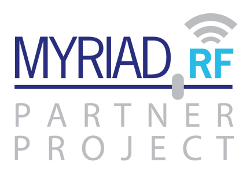Posted: July 4th, 2016 | Author: Dmitry Klyuykov | Filed under: Journey to GSM | Tags: gnu radio, gqrx, GSM, sdr | No Comments »
In the third article of the series we will try to find GSM signal.
First of all, we need to design a signal processing algorithm. The GNU Radio package contains a frontend graphical interface designated for design signal processing flow graphs that may ease our work. It could be found in Application Center with GRC name, which means GNU Radio Companion. GRC automatically creates python programs for the required SDR blocks.
Let’s start with adding of USRP Source from UHD tab to the workspace of GRC. USRP Source is the abstraction layer that allows communication with a hardware. It produces digital signal which will be consumed by the next blocks in our flow graph. The source block tells our SDR to turn on receive mode.
Read the rest of this entry »
Posted: June 16th, 2016 | Author: Dmitry Klyuykov | Filed under: Journey to GSM | Tags: GSM, sdr, tutorial | No Comments »
To begin with the exercise, we need to install hardware and software components. First of all, we need to be sure that our computer and SDR board know each other. For that purpose, it’s necessary to install Universal Software Radio Peripheral (USRP) Hardware Driver (UHD) and UmTRX module to that driver on our machine. UHD is the device driver provided by Ettus Research for use with the USRP product family. UmTRX driver is a loadable module for the UHD library. Loading UmTRX driver allows any of the myriad of UHD applications to work with UmTRX just like with any other UHD compatible device. Below we describe how to install the UHD library (The UHD version supported by the current UmTRX driver is 003.008) and UmTRX module for it.
Read the rest of this entry »
Posted: June 16th, 2016 | Author: Dmitry Klyuykov | Filed under: Journey to GSM | Tags: GSM, sdr, tutorial | No Comments »
In this series of articles with the codename “Journey to GSM”, we would like to familiarize any IT enthusiast with the technology we use everyday – Global System for Mobile communications (GSM). The main purpose of these articles is to introduce and demystify GSM and Software Defined Radio (SDR) technologies to a wide audience of IT professionals.

Software Defined Radio is a radio system which performs the required signal processing in software instead of using dedicated integrated circuits in hardware. The advantage of that approach is that since software can be easily replaced in the radio system, the same hardware can be used to create many kinds of equipment for many different radio standards. Therefore, one SDR can be used for a variety of applications. SDR is a technology that makes IT and Telecommunications closer to each other.
Read the rest of this entry »



